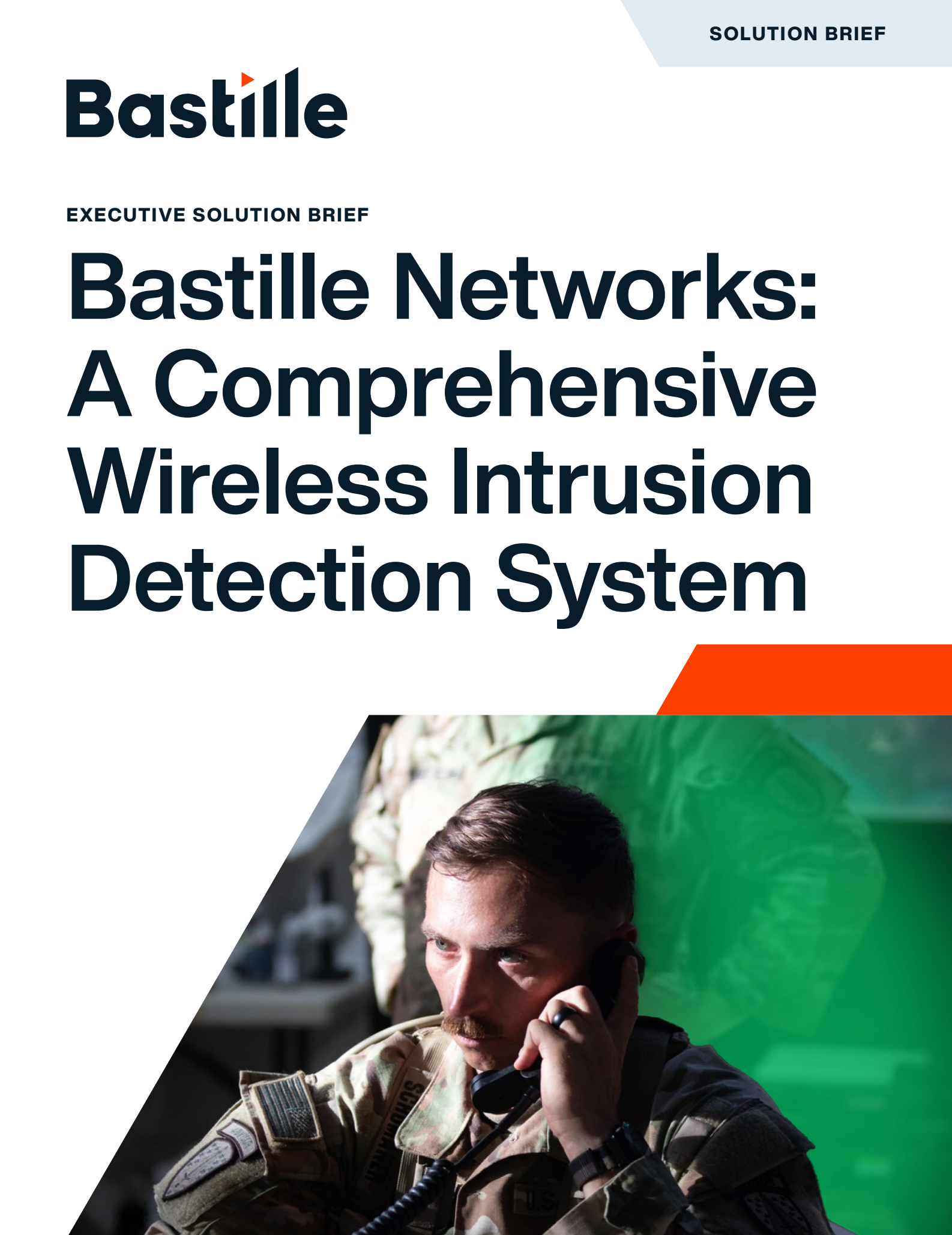
Secured Compartmented Information Facilities (SCIFs) are the bedrock of national security, serving as sanctuaries where authorized personnel handle the most sensitive and classified information. Ensuring the integrity and security of these facilities is paramount for U.S. Federal Government agencies, particularly within the Department of Defense (DoD). As the landscape of wireless threats evolves, traditional security measures within SCIFs need augmentation from cutting-edge technology. Wireless Intrusion Detection Systems (WIDS) have proven indispensable in augmenting SCIF security.
Understanding the Importance of SCIF Security
SCIFs exist to prevent any unauthorized access to classified information. These secure facilities are subject to stringent physical and cybersecurity protocols, but as the threat landscape evolves, so must the defenses. The proliferation of wireless devices, including smartphones, IoT devices, and unauthorized network access points, poses a significant risk to the sanctity of SCIF environments. Security professionals, particularly those in roles such as Special Security Officer (SSO), must consider the invisible threat of wireless devices as seriously as any physical security breach.
The Role of Wireless Intrusion Detection Systems (WIDS) in SCIF Security
A Wireless Intrusion Detection System (WIDS) is a crucial component in maintaining the security of a SCIF. Unlike traditional security systems focusing primarily on physical access control and network security, WIDS targets the wireless environment specifically. The primary function of WIDS is to detect unauthorized wireless devices, rogue access points, and suspicious wireless activity within or near a SCIF. By deploying a WIDS, security professionals can monitor, detect, and respond to potential wireless threats in real-time.
Why SCIFs Need Advanced WIDS Technology
1. Protection Against Rogue Wireless Devices
Unauthorized wireless devices pose a substantial threat to SCIFs. These can include anything from rogue access points to smartphones that may inadvertently or maliciously connect to a network. Advanced WIDS technology can identify and locate these devices before they can compromise sensitive information. With the ability to detect known and unknown wireless devices, WIDS adds a crucial layer of defense that traditional security measures might miss.
2. Mitigating the Risks of IoT Devices
The Internet of Things (IoT) has introduced a new wave of connectivity, but with it comes a significant increase in potential vulnerabilities. IoT devices, often designed with minimal security features, can be an entry point for cyber-attacks. In a SCIF environment, where the introduction of any unauthorized device can be catastrophic, WIDS plays a pivotal role in identifying and neutralizing these threats. By monitoring the airspace for unusual wireless protocols and behaviors associated with IoT devices, WIDS can prevent these devices from becoming a conduit for data leaks or other security breaches.
Wireless Threat Intelligence (WTI): Enhancing SCIF Security
Wireless Threat Intelligence (WTI) is an emerging concept that improves existing WIDS technology. WTI enables security professionals to not only detect wireless devices but also to analyze and assess the threat level they pose. This intelligence-driven approach allows for a more proactive defense strategy in SCIFs.
1. Detection of Non-Networked Wireless Devices
One of the most significant advancements in WIDS technology, powered by WTI, is the ability to detect wireless devices not connected to the network. Traditional security systems often overlook these devices – such as cell phones, wearables, or IoT gadgets – particularly those only focused on Wi-Fi networking devices. However, they can still pose a risk by acting as listening devices or being used to exfiltrate data. WTI enhances the ability of WIDS to detect these non-networked devices, ensuring that no potential threat goes unnoticed.
2. Real-Time Threat Analysis
WTI enables real-time analysis of detected devices, providing security professionals with the information needed to make informed decisions quickly. Such analysis includes identifying the type of device, its potential threat level, and its location within the facility. By combining this intelligence with the detection capabilities of WIDS, SCIF security teams can respond to threats more effectively and efficiently.
Implementing WIDS in SCIF Environments
Deploying a Wireless Intrusion Detection System in a SCIF involves careful planning and execution. The following steps outline how to integrate WIDS into your SCIF security protocol effectively:
1. Assessment of Wireless Threat Landscape
Before implementing WIDS, conducting a thorough assessment of the wireless threat landscape specific to your SCIF is essential. Such assessments include identifying potential entry points for wireless threats, understanding the types of devices that may pose a risk, and evaluating the current in-place security measures.
2. Selection of WIDS Technology
Not all WIDS solutions are created equal. When selecting a WIDS for your SCIF, consider factors such as the range of detection, the ability to detect non-networked devices, the types of wireless protocols it can detect, and the integration with other security systems. Advanced WIDS solutions incorporating WTI are valuable, particularly for their enhanced detection and analysis capabilities.
3. Installation and Calibration
Proper installation and calibration of WIDS are critical to its effectiveness, including placing sensors in optimal locations to ensure comprehensive coverage of the SCIF, configuring the system to detect a wide range of wireless devices, and regularly updating the system to keep pace with evolving threats.
4. Continuous Monitoring and Response
WIDS is not a set-it-and-forget-it solution. Continuous monitoring is necessary to ensure that the system functions correctly and that potential threats are detected and addressed promptly. It is essential to conduct regular reviews of WTI data to identify patterns or emerging threats that may require additional security measures.
Challenges in WIDS Implementation and How to Overcome Them
While WIDS technology is a powerful tool for enhancing SCIF security, it has challenges. Understanding these challenges and how to address them is vital to a successful WIDS deployment.
1. False Positives
One of the most common challenges with WIDS is the potential for false positives. These occur when the system mistakenly identifies a benign device as a threat. It is essential to mitigate these mistakes by fine-tuning the system’s detection parameters and using WTI to differentiate between harmless and potentially harmful devices.
2. Integration with Existing Security Systems
Integrating WIDS with existing security systems can be complex, especially in environments with legacy infrastructure. Working with experienced vendors who understand SCIF requirements can help to ensure seamless integration and minimize disruption to ongoing operations.
3. Keeping Up with Emerging Threats
The wireless threat landscape continually evolves, with new devices and protocols emerging regularly. It is crucial to keep your WIDS and WTI systems up to date with new detection capabilities and the latest threat intelligence to stay ahead of these threats. Regular training for security personnel on new threats and system updates is also essential.
The Future of SCIF Security with WIDS and WTI
As wireless technologies continually advance, robust SCIF security measures are crucial. WIDS, powered by Wireless Threat Intelligence, represents the future of SCIF security, offering unparalleled protection against the growing array of wireless threats.
In the coming years, we can expect WIDS technology to become even more sophisticated, with improved detection capabilities, enhanced integration with other security systems, and more advanced WTI features. For security professionals in the U.S. Federal Government, particularly within the DoD, staying ahead of these developments will be critical to maintaining the security and integrity of SCIFs.
Conclusion
The security of SCIFs is a top priority for U.S. Federal Government agencies, especially within the Department of Defense. As wireless threats evolve, so must the measures we use to protect these critical facilities. By integrating advanced Wireless Intrusion Detection Systems with Wireless Threat Intelligence, security professionals can ensure that SCIFs remain impenetrable to unauthorized wireless devices and the potential risks they bring.
Maximizing SCIF security with the latest WIDS technology is not just about keeping up with the times; it’s about staying ahead of potential threats and ensuring that the nation’s most sensitive information remains secure. For Special Security Officers and other security professionals, investing in WIDS and WTI is an investment in the future of national security.



